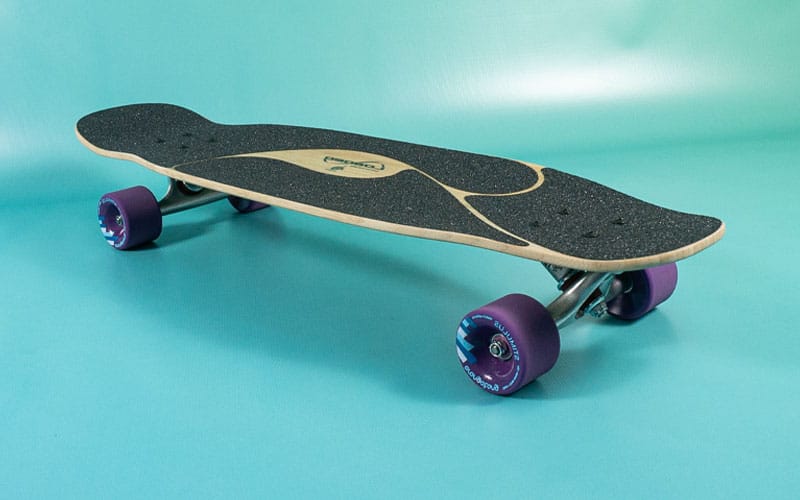The Arbor Pilsner is a high-quality cruiser skateboard similar to the Landyachtz Dinghy. It’s functional for casual cruising and occasional tricks. Arbor Pilsner is a sustainability-driven company that has planted over 500,000 trees to rebuild forests.
Affiliate disclaimer: We earn a commission if you make a purchase, at no additional cost to you.
Deck
The Pilsner has a mellow concave, subtle kicktail/nose, and wheel wells to prevent wheelbite. Overall, it’s a comfortable shape for cruising. It has a clear spray-on grip, which will wear down quicker than traditional griptape.
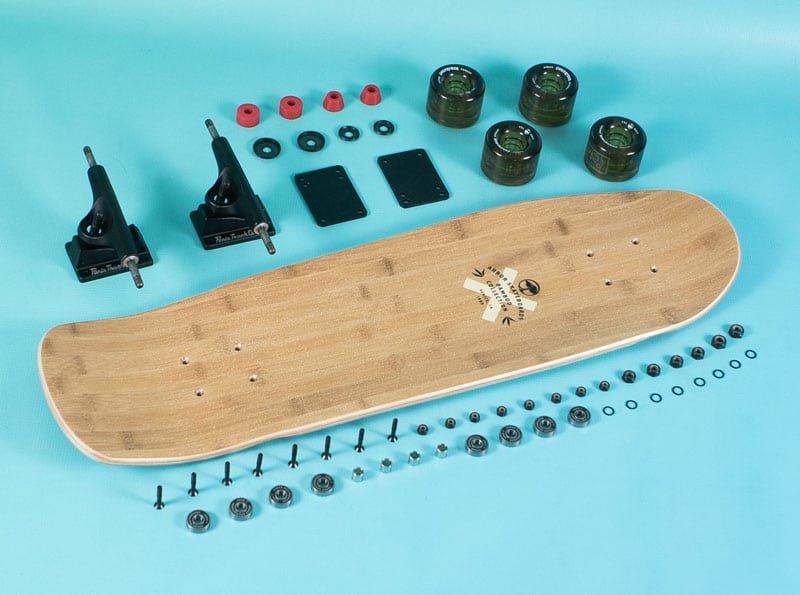

Trucks
Paired with Paris 129mm traditional kingpins (TKPs) and ⅛ inch riser pads. Paris trucks are a staple in the industry and are made with quality components.
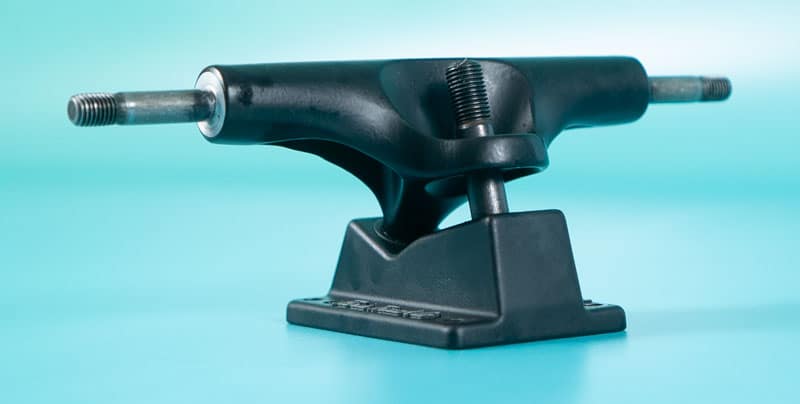
Bushings
The bushings are 90a barrel and cone.
You can experiment with Riptide bushings for a different riding feel.
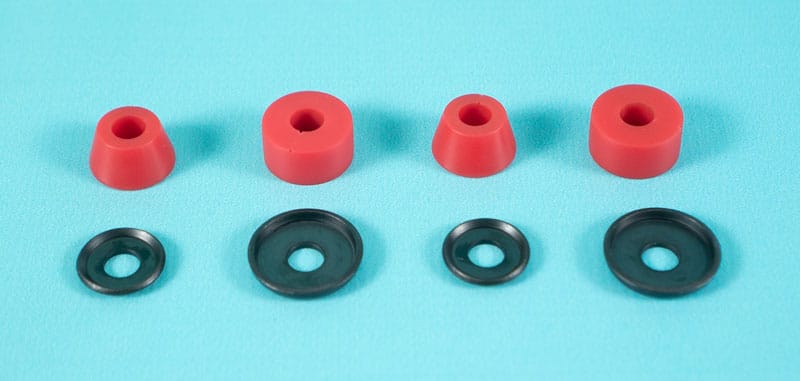
Wheels
The wheels are 61mm 78a.
They’re harder to powerslide because they’re not stone ground.
If you want wheels that are easier to powerslide/speed-check, I’d check out the Fatty Hawgs.
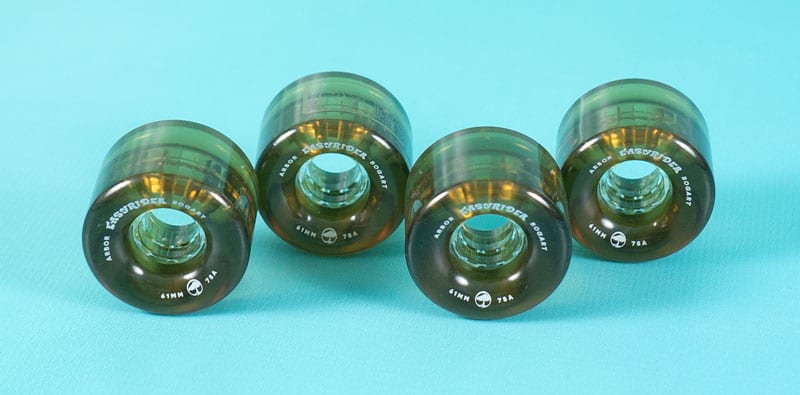
Bearings
The bearings are standard with separate spacers.
If you’re swapping out your wheels often, having separate spacers can be more annoying than having built-in bearings.
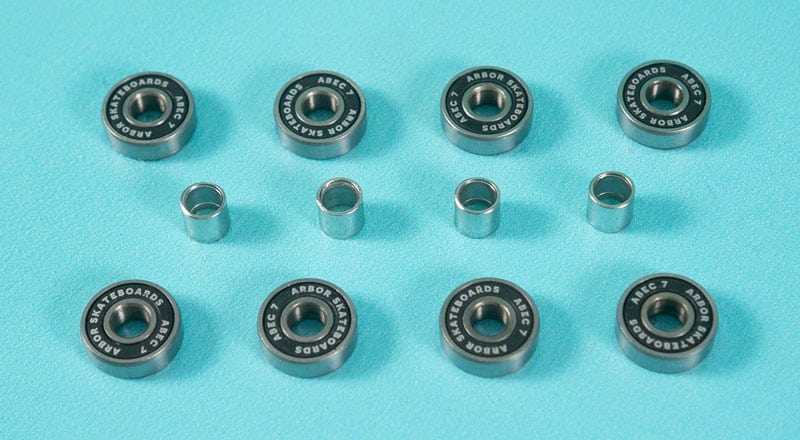
Alternative Setups
If you’re considering the Arbor Pilsner, you might want to consider the alternatives below.
Landyachtz Dinghy
Length:
28.2″ – 28.5″
71.6 cm – 72.5 cm
Width:
8″ – 8.6″
20.3 cm – 21.8 cm
Wheelbase:
14.5″ – 15″
36.8 cm – 38.1 cm
Arbor Pocket Rocket
Length
27” / 68.6cm
Width
7.75″ / 19.7cm
Wheelbase
14” / 35.6cm
Arbor Oso
Length
30″ / 76.2cm
Width
10″ / 25.4cm
Wheelbase
15.5″ / 39.4cm
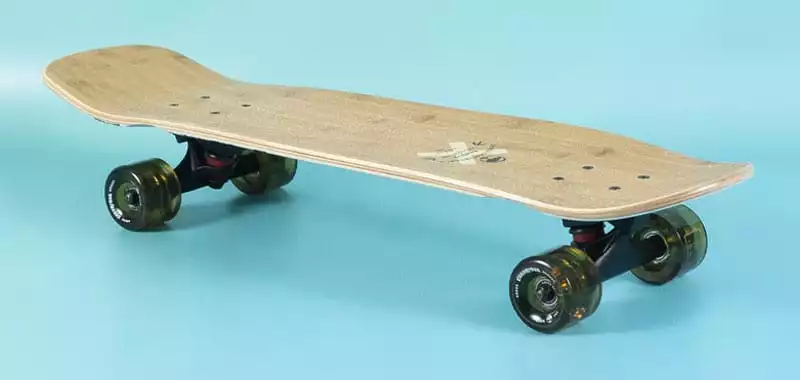
Arbor Pilsner vs Landyachtz Dinghy?
The Arbor Pilsner and Landyachtz Dinghy are both made of high-quality parts. The Pilsner uses Paris trucks and Dinghy uses Bear trucks. The Pilsner uses standard bearings that have separate spacers and the Dinghy uses built-in bearings. Overall, you can’t go wrong with either.
Can you ollie an Arbor Pilsner?
Yes, you can ollie an Arbor Pilsner. However, it’s not as functional for tricks compared to a street skateboard. The nose and kicktail are more subtle on the Pilsner, which makes it harder to pop. If you want to learn how to do flip tricks, you can do them on the Pilsner, but it’s not as ideal as a street skateboard.
Arbor Pilsner as a surfskate?
The Arbor Pilsner can work as a surfskate, however, it’s not an ideal deck shape. When choosing a surfskate, it’s best to have a wider deck for pumping. Plus the 15-inch wheelbase isn’t optimal for surfskating. But you can swing it if this is the only deck you have.

